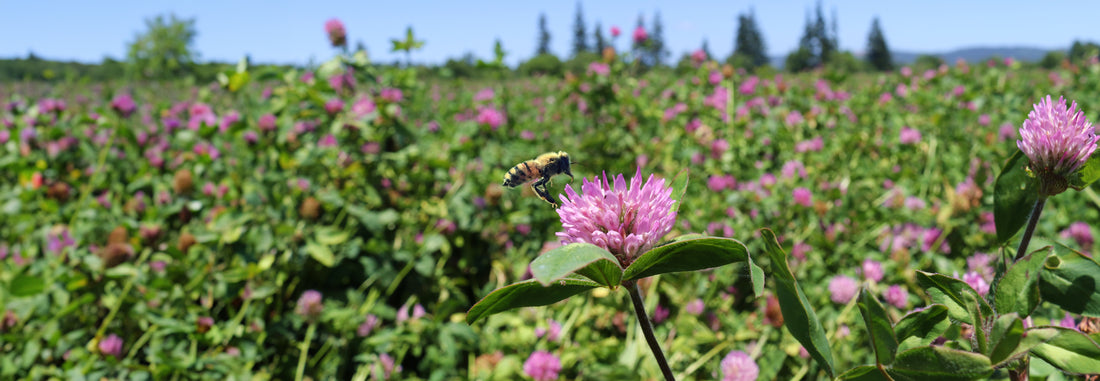Lets start with Bees and Pollination
Pollination is an essential part of plant reproduction. Pollen from a flower’s anthers (the male part of the plant) brushes off onto a pollinator. The pollinator then takes this pollen to another flower, where the pollen sticks to the stigma (the female part). The fertilized flower now can produce fruit and seeds.
Plants and pollinators have evolved side by side over millions of years. Natural selection has resulted in physical adaptations in both plants and pollinators. Plants developed many complex ways of attracting pollinators. Similarly, pollinators evolved with specialized physical traits and behaviors that enhance their pollination efforts. Honey bees are the most important insect pollinators of cultivated crops worldwide, pollinating around 80% of flowering plants and more than 130 types of fruits and vegetables. This includes crops like apples, bananas, blueberries, strawberries, cherries, melon, peaches, hazelnuts, vanilla, almonds, coffee, and even cacao. Flower nectar provides bees with the sugar to fuel their flights. The proteins and amino acids in pollen are vital nutrients needed by young bee larvae back in the hive.
Van Calcar Apiary
 We recently had the pleasure of visiting with Nick VanCalcar and his bees near McMinnville, Oregon. It was hot for early June and his bees were very busy in the red clover fields on all sides of us. Nick opened up a few hives to tell us about his bees. Kevin, Hummingbird purchaser and resident beekeeper, Kara our Farm Connections & Sourcing Manager and Mack, one of our purchasers, asked questions and shared ideas. Nick is quite a storyteller. He started working with bees during summers in High School and through college. After college, he worked full-time with his brother for his friend's parents' honey & pollination business for 4-1/2 years before he bought half of their bees and started his own business.
We recently had the pleasure of visiting with Nick VanCalcar and his bees near McMinnville, Oregon. It was hot for early June and his bees were very busy in the red clover fields on all sides of us. Nick opened up a few hives to tell us about his bees. Kevin, Hummingbird purchaser and resident beekeeper, Kara our Farm Connections & Sourcing Manager and Mack, one of our purchasers, asked questions and shared ideas. Nick is quite a storyteller. He started working with bees during summers in High School and through college. After college, he worked full-time with his brother for his friend's parents' honey & pollination business for 4-1/2 years before he bought half of their bees and started his own business.
Nick employs ten beekeepers to manage 8,000 bee colonies that get trucked around in Oregon and California depending on what needs pollinating. He rents out his bees as pollinators, moving them from crop to crop throughout the growing season. The farmers depend on the bees for their crops and honey is a product of the bees' work.

We offer many floral source varietals in 1 lb and 5.5 lb retail jars, and several in bulk as well. See our collection.
Regional and Nectar Source Transparency
With each agricultural crop, the bees produce honey with a diverse array of naturally occurring flavors that reflect the floral source of the nectar they gather. We source regional and nectar-source-specific honey, so you know where your honey comes from and the floral source of the pollen. We focus on specialty Pacific Northwest honey, offering unique varietals as well as year-round staples for bulk sales. We also offer an exclusive domestic Hawaiian Certified Organic honey!
Take a look at the slideshow from our visit with Nick and his bees.

